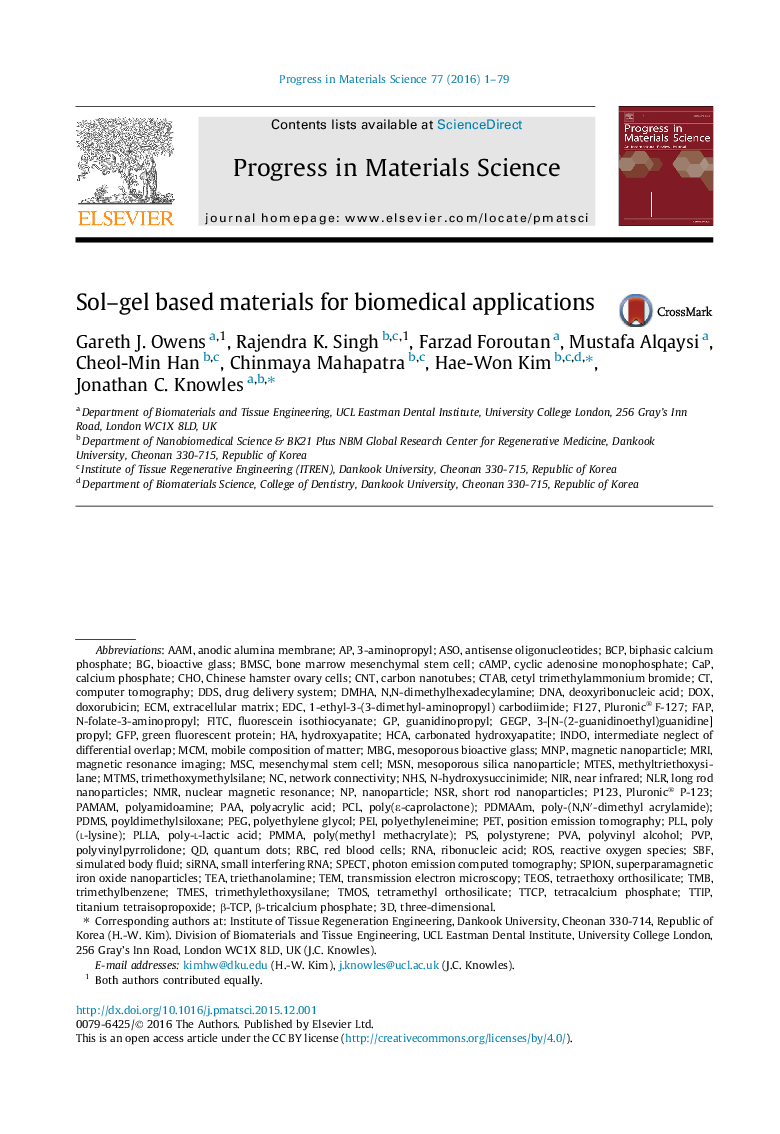| Article ID | Journal | Published Year | Pages | File Type |
|---|---|---|---|---|
| 8023111 | Progress in Materials Science | 2016 | 79 Pages |
Abstract
Sol-gel chemistry offers a flexible approach to obtaining a diverse range of materials. It allows differing chemistries to be achieved as well as offering the ability to produce a wide range of nano-/micro-structures. The paper commences with a generalized description of the various sol-gel methods available and how these chemistries control the bulk properties of the end products. Following this, a more detailed description of the biomedical areas where sol-gel materials have been explored and found to hold significant potential. One of the interesting fields that has been developed recently relates to hybrid materials that utilize sol-gel chemistry to achieve unusual composite properties. Another intriguing feature of sol-gels is the unusual morphologies that are achievable at the micro- and nano-scale. Subsequently the ability to control pore chemistry at a number of different length scales and geometries has proven to be a fruitful area of exploitation, that provides excellent bioactivity and attracts cellular responses as well as enables the entrapment of biologically active molecules and their controllable release for therapeutic action. The approaches of fine-tuning surface chemistry and the combination with other nanomaterials have also enabled targeting of specific cell and tissue types for drug delivery with imaging capacity.
Keywords
Related Topics
Physical Sciences and Engineering
Materials Science
Nanotechnology
Authors
Gareth J. Owens, Rajendra K. Singh, Farzad Foroutan, Mustafa Alqaysi, Cheol-Min Han, Chinmaya Mahapatra, Hae-Won Kim, Jonathan C. Knowles,
